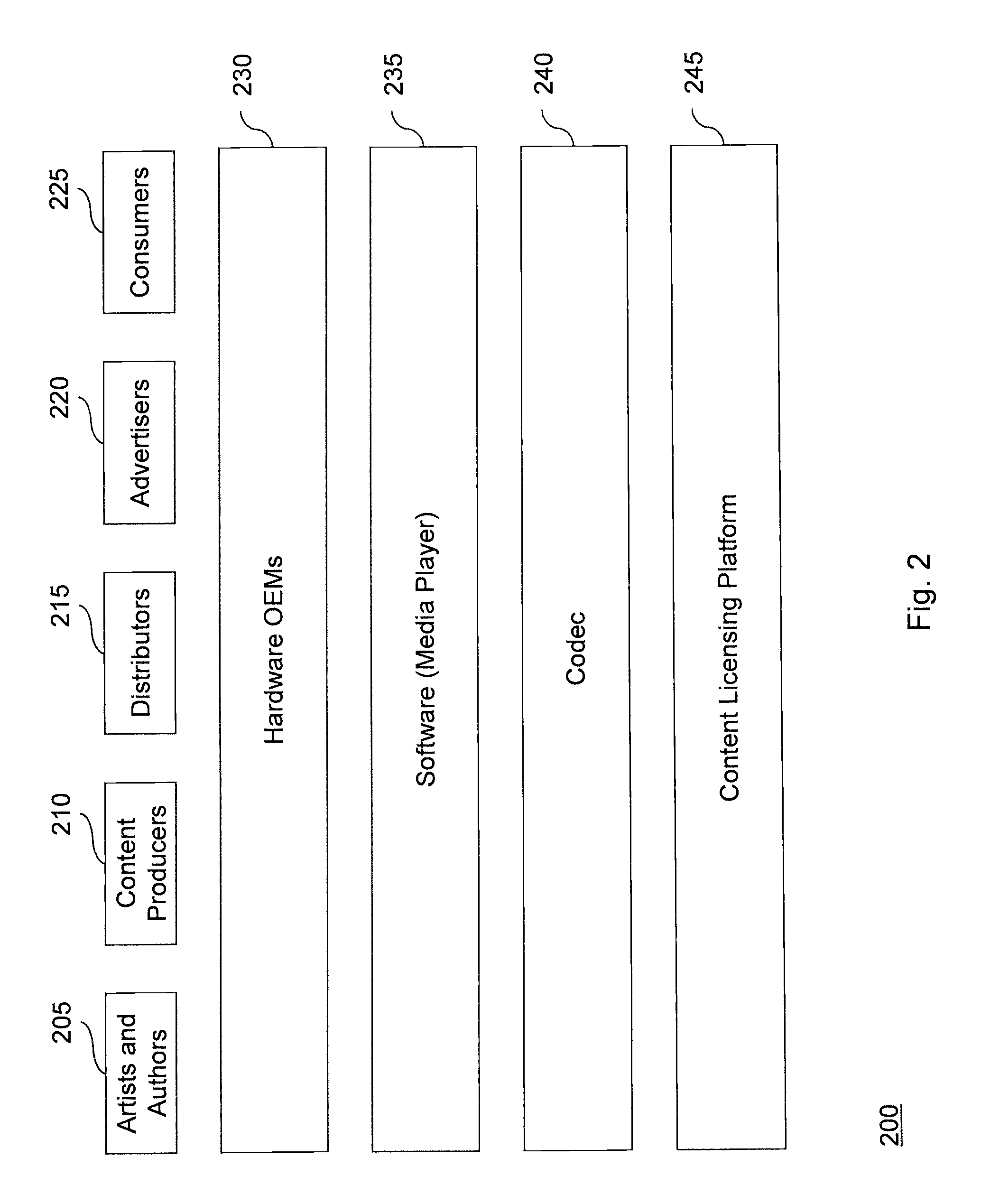System and method for managing content consumption using a content licensing platform
a content licensing and content technology, applied in the direction of instruments, commerce, advertisements, etc., can solve the problems of insufficient media buying models for advertisers, service disruption, and inability to keep up with the increasing fragmentation of the digital age, and achieve the effect of maximizing the value of content asset transaction valu
- Summary
- Abstract
- Description
- Claims
- Application Information
AI Technical Summary
Benefits of technology
Problems solved by technology
Method used
Image
Examples
Embodiment Construction
[0020]Referring to FIG. 1, an exemplary content management system 100 is provided according to various aspects of the invention. System 100 may manage interactions among various entities in a content asset transaction chain in a way that maximizes content asset transaction values for each party in the chain. For example, each entity in the content asset transaction chain may assume at least one role, such as a role of an artist 105, a content producer 110, an advertiser 115, a distributor 120, a consumer 175, an auditor 170, a player 180, and / or others. Each entity may have unique needs, interests, or other characteristics, and system 100 may overcome the drawbacks of existing systems by managing content transactions in a way that furthers the interests of each entity in the chain. Those skilled in the art will recognize that in some implementations, entities may assume multiple roles, or roles may be shared among multiple entities, or various permutations thereof may be realized. F...
PUM
 Login to View More
Login to View More Abstract
Description
Claims
Application Information
 Login to View More
Login to View More - R&D
- Intellectual Property
- Life Sciences
- Materials
- Tech Scout
- Unparalleled Data Quality
- Higher Quality Content
- 60% Fewer Hallucinations
Browse by: Latest US Patents, China's latest patents, Technical Efficacy Thesaurus, Application Domain, Technology Topic, Popular Technical Reports.
© 2025 PatSnap. All rights reserved.Legal|Privacy policy|Modern Slavery Act Transparency Statement|Sitemap|About US| Contact US: help@patsnap.com



